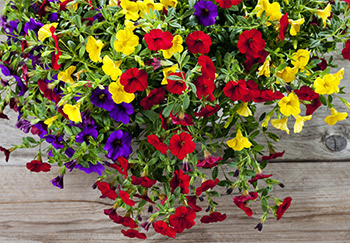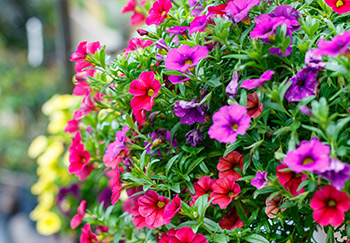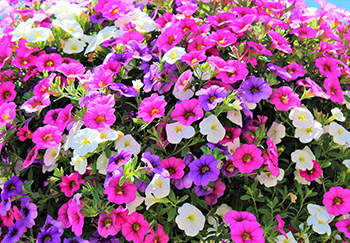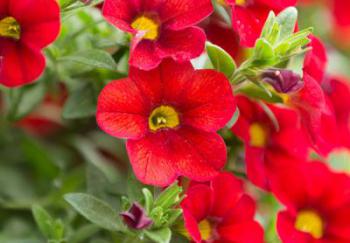Calibrachoa (Million Bells) Growing Guide
Native to South America, these dense, colourful and trailing flowers have been exported all over the world since the 1800s and have proven enduringly popular. Closely related to the Petunia, Million Bells (or Calibrachoa, after the Mexican botanist Antonio de la Cal i Bracho) are hardier and longer blooming, making them a favourite in gardens up and down the country. Million Bells are very suited to containers, particularly hanging baskets, and this is because of their dense, trailing habit, which sees cascades of colour spilling gracefully over the edge. Importantly, Million Bells never stretch out in a long and spindly fashion, but rather remain tightly packed together as they escape the basket, resembling somewhat a head of flowery hair! This, combined with their long blooming time (spring to frost) help make them a solid choice for everything from a large gardens to a couple of hanging baskets on a balcony.
How to Grow - Planting
Million Bells are technically perennials but you can grow them as annuals as well. The majority of gardeners grow them in containers, and their trailing habit makes them particularly suited to hanging baskets. When planting them in containers or baskets, use a container compost. It’s most important to ensure adequate drainage as this is perhaps the one area where Million Bells are a little fussy. Million Bells can be grown as ground cover. If you plan to follow this route, be sure to plant widely enough to cover the area as they do not spread laterally very far.
Million Bells are drought and heat tolerant and can also put up with mild frost. Accordingly, this does not need to be a deciding factor when planting. However, do ensure your Million Bells receive adequate sunshine. No shade is preferable although they can tolerate partial shade.

Ongoing Care
In terms of watering, Million Bells do not need anything like a regular schedule. Rather, test the soil every now and again and only water when the top two cm’s or so has dried out. Water thoroughly, but do not do so again until the soil dries out. It’s likely that you will only need to water in periods of extended drought or particularly hot conditions.
Feeding is quite important for Million Bells. Apply a slow release organic fertiliser and first top up with a liquid feed every couple of weeks. Million Bells are heavy feeders so this will be used up quicker than is the case with other plants.

Pruning and Training
Million Bells will rarely need cutting back, perhaps only in cases where there is seriously limited space and they have spilled significantly over the edge of a hanging basket. This is of course unlikely. As mentioned above they do not trail in a long and spindly fashion. They also do not require deadheading – another load off your mind!

Pests and Diseases
The most common afflictions suffered by Million Bells are related to over watering and/or poor drainage, which is probably the most important thing to keep in mind when growing them. If Million Bells lie in waterlogged soil for too long, root rot can set in.

Million Bells in Your Garden
Most often seen spilling over the edges of hanging baskets or grown in containers, Million Bells have become a solid choice for those with little space. Even the tiniest balcony will accommodate these plants but, as mentioned, they can be grown in gardens as ground cover as well. When covering a significant area, this can be a mightily impressive sight.
Million Bells are known to attract butterflies, meaning a good amount in your garden can bring with it a healthy ecosystem and a garden vibrating with life. Given the density of flowering, this isn’t even a particularly difficult feat to achieve. Just a few strategically positioned containers can bring with it literally hundreds of flowers to attract such wildlife.
Million Bells of course resemble their close cousin, Petunias, but with a longer flowering time and a greater resistance to adverse weather conditions, they might just prove to be the better choice for bringing dense trailing colour to your garden for three quarters of the year.

Useful Links
- Geranium Growing Guide (Article)
- Dianthus Growing Guide (Article)
- Camellia Growing Guide (Article)
- Shop online for Bedding and Patio Plants
- Shop online for Cottage Garden Plants






